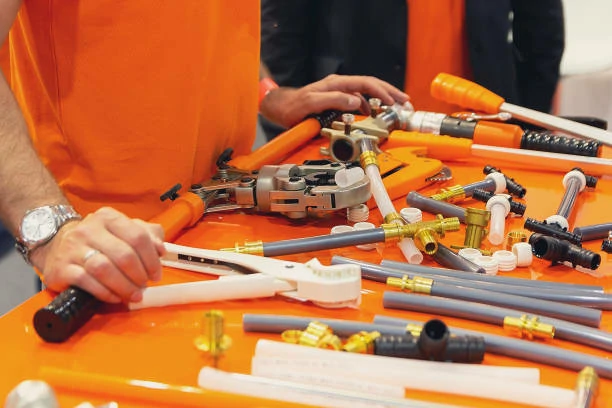1. Introduction to PEX Pipe and Tubing
PEX (cross-linked polyethylene) pipe and tubing have gained popularity in modern plumbing systems. They offer flexibility, ease of installation, and durability. Unlike traditional copper or PVC pipes, PEX Pipe can bend around corners and obstacles without the need for fittings. This flexibility makes installation faster and reduces material costs. PEX pipes are available in various sizes, from small 1/2-inch pipes for residential use to larger sizes for commercial applications. PEX is widely used in both hot and cold water systems, radiant floor heating, and even snow-melting applications. Its resistance to scale buildup, corrosion, and chlorine makes it a long-lasting choice. PEX pipes can last up to 50 years when properly installed, offering significant cost savings over time.
2. Advantages of PEX Pipe and Tubing
PEX pipes have several key advantages over traditional plumbing materials like copper and PVC. The material is flexible, which simplifies installation and minimizes the need for fittings. For example, a PEX pipe can bend around a corner instead of requiring a joint. This reduces the chances of leaks at the connections and makes installations quicker and cheaper. Additionally, PEX pipes are resistant to freezing and bursting. They can expand slightly when frozen and return to their original shape once thawed. PEX is also corrosion-resistant, meaning it does not rust or degrade over time like metal pipes. Furthermore, PEX’s smooth interior reduces friction, which improves water flow efficiency. This also reduces energy costs and water waste, making it more eco-friendly.
3. Applications of PEX Pipe and Tubing
PEX pipes are versatile and can be used in a variety of plumbing applications. In residential plumbing, they are ideal for water supply lines, both hot and cold. For example, a 3/4-inch PEX pipe is commonly used to carry water to bathrooms, kitchens, and laundry rooms. PEX is also a popular choice for radiant floor heating systems. It can be installed in slabs, beneath floors, or in wall cavities to distribute heat evenly. In commercial applications, PEX is used for distributing hot and cold water throughout buildings. Its resistance to chlorine and chemicals makes it ideal for use in pools, spas, and industrial applications. Moreover, PEX is commonly found in fire sprinkler systems because of its durability and cost-effectiveness. Its adaptability makes it a reliable solution for a wide range of plumbing and heating needs.
4. Installation of PEX Pipe and Tubing
Installing PEX pipe requires specialized tools and careful attention to detail. You will need a PEX cutter to make clean cuts and a crimping tool to secure fittings. For example, crimp rings or push-fit fittings are used to connect PEX pipes. These fittings create tight, leak-proof connections. The flexibility of PEX allows it to be routed around corners and obstacles with minimal effort, reducing the need for elbows and joints. This flexibility speeds up installation and can save on material costs. It is also easier to work with in confined spaces compared to rigid pipes. PEX installations often require fewer fittings, which means fewer potential leak points. Once installed, inspect the system for leaks and ensure all fittings are secure. Regular maintenance includes checking for any signs of wear or damage.
5. Why Choose PEX Pipe and Tubing?
PEX pipe and tubing offer a combination of benefits that make it an attractive choice for plumbing systems. Its flexibility, ease of installation, and cost-effectiveness make it ideal for both residential and commercial applications. For example, homeowners appreciate how quickly PEX can be installed in complex plumbing layouts. Its resistance to freezing, bursting, and corrosion makes it a reliable option for colder climates. PEX also helps improve water flow efficiency, reducing energy consumption. Unlike metal pipes, PEX doesn’t make noise when water flows through, eliminating issues like water hammer. Moreover, PEX is a safe and eco-friendly option. It contains no lead, and its durability reduces the need for frequent repairs or replacements. All these qualities make PEX pipes an efficient, durable, and cost-effective choice for modern plumbing and heating systems.
Global Standards for PEX Pipes
PEX pipes adhere to various international standards to ensure their safety, reliability, and performance in different applications. Key standards include ISO 15875, GB/T 18992, and DIN 16892, each catering to specific regions and requirements. ISO 15875 covers hot and cold water systems, defining criteria for material properties and performance under varying temperatures and pressures. GB/T 18992 focuses on specifications for China, ensuring PEX pipes meet the country’s unique environmental and regulatory standards. DIN 16892 is specific to Germany, ensuring PEX pipes meet stringent performance and safety criteria for domestic water supply and heating. ASTM F877 and ASTM F2788 apply in the U.S., outlining requirements for PEX pipes used in water distribution and hydronic heating systems. In the UK, BS 7291 and BS EN ISO 15875 regulate PEX pipe specifications for various plumbing and heating applications. Lastly, CSA B137 covers Canadian standards, emphasizing performance in both potable water and heating systems. These global standards ensure that PEX pipes are durable, safe, and suitable for diverse plumbing needs across different countries.
Contact
nectarplus is a professional manufacturer with 30 years of experience, dedicated to producing high-quality plastic pipes, fittings, and valves. Our products include brass valves, PPR valves, as well as various pipes and fittings to meet different customer needs. Whether you need plumbing and drainage pipes or valve products. nectarplus can provide a diverse range of high-quality, cost-effective products to support your projects. Below is our contact information.
We will reply your email or fax within 24 hours.
You can call us at any time if there is any question on our production.
Pls Mailto: [email protected]
Whatsapp: + 86 19857948982

